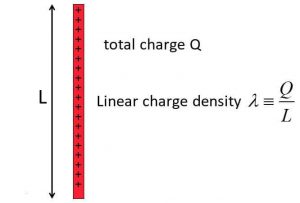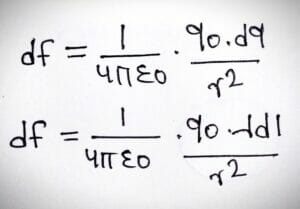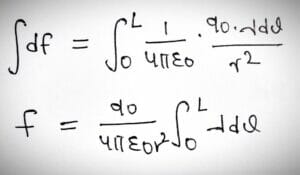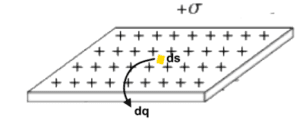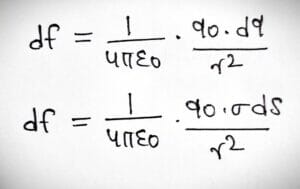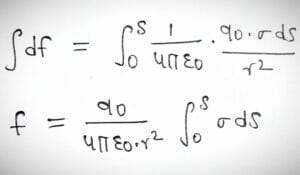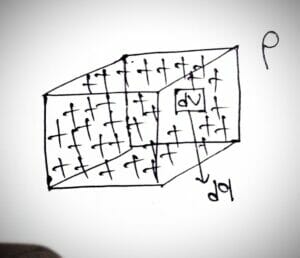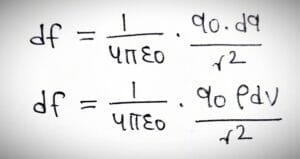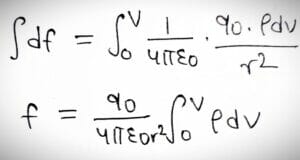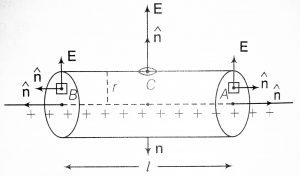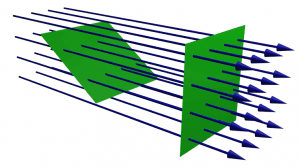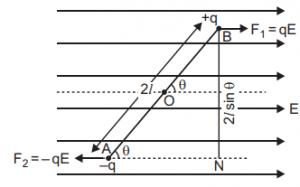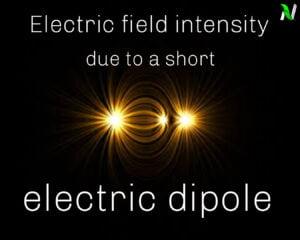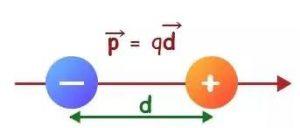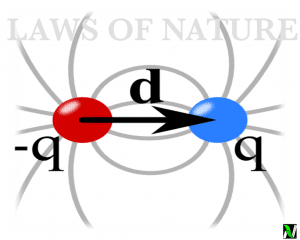CONTINUOUS CHARGE DISTRIBUTION
INTRODUCTION
If I ask you to find the electrostatic force between the two stationary electrical charges then you can easily find the required value of electric force by just applying coulomb’s laws.
If I again ask you to find the electrostatic force due to system of Charges then again you can easily find the required value of electrostatic force by just applying the superposition principle.
But what if I ask you to find the value of electric force due to a charge q which are uniformly distributed over the surface of metalic rod at distance r. What do you do in this case? If you think that you will try and find out answer by applying coulomb’s laws then you are thinking wrong. Actually you can’t apply coulomb’s laws here because there is not single charge on the metalic rod present rather charge is uniformly distributed on the rod and coulomb’s laws is applied where there is two stationary electrical charges are present.
And if you can’t apply coulomb’s laws, then you also can’t apply superposition principle.
Because superposition principle is algebraically sum of electrostatic force, means electrostatic force is necessary to find superposition principle, and electrostatic force is only given by the coulomb’s laws.
Then how can we find the electrostatic force, when the charge is uniformly distributed over any conductor?, don’t worry…
In this section we are going to discuss continuous charge distribution in detail, so stay with us till end.
WHAT IS CONTINUOUS CHARGE DISTRIBUTION
So what is continuous charge distribution? A continuous charge distribution is a system in which charges are distributed uniformly over a conductor. In this type of system, infinite numbers of Charges are closely packed having very little space between them.
On the basis of the geometry of the body charge distribution is of three types.
1). Linear charge distribution
2). Surface charge distribution
3). Volumetric charge distribution
LINEAR CHARGE DISTRIBUTION
When the charge is uniformly distributed over the length of the conductor then it is called linear charge distribution. It is also defined as charge per unit length and also called linear charge density and denoted by (lambda) λ. It’s unit C/m.
Mathematically, linear charge density is given as –
λ = dq/dl
DERIVATION OF ELECTRIC FORCE ON CHARGE Q0 DUE TO LINEAR CHARGE DISTRIBUTION
Let’s consider a conductor of length L, which have charge q uniformly distributed over it. At x metre away from one end, Take a small length element dl on it.
Then the small charge dq due to small length element dl is given as-
dq = λdl
Where λ is linear charge density.
Force on the charge q0 due to the linear charge distribution is given as follows –
Integrating both side with proper limits, then we get –
SURFACE CHARGE DISTRIBUTION
When charge is uniformly distributed over the surface of the conductor then it is called surface charge distribution. It is also defined as charge per unit surface area and also called surface charge density and denoted by σ (sigma). It’s unit is C/m².
Mathematically, surface charge density is given as –
σ = dq/dS
DERIVATION OF ELECTRIC FORCE ON CHARGE Q0 DUE TO SURFACE CHARGE DISTRIBUTION
Let’s consider a conductor plate of surface area S, which have charge q uniformly distributed over it. Take a small areal element dS on it.
Then the small charge dq due to small areal element dS is given as-
dq = σdS
Where σ is surface charge density.
Force on the charge q0 due to the surface charge distribution is –
Integrating both side with proper limits, then we get –
VOLUMETRIC CHARGE DISTRIBUTION
When charge is uniformly distributed over the volume of a conductor then it is called volumetric charge distribution. It is also defined as charge per unit volume and also called volumetric charge density and it is denoted by ρ.
It’s unit is C/m³.
Mathematically, volumetric charge density is given as –
ρ = dq/dV
DERIVATION OF ELECTRIC FORCE ON CHARGE Q0 DUE TO VOLUMETRIC CHARGE DISTRIBUTION
Let’s consider a cubicle conductor of volume V,
which have charge q uniformly distributed over it. Take a small volumetric element dV on it, then the small charge dq due to the small volumetric element dV is given as –
dq = ρdV
Where ρ is the volumetric charge density.
The electrical force on the charge q0 due to the volumetric charge distribution is given as –
Integrating both side with proper limits, then we get –
Watch this video for more reference –
Was this article helpful?
YesNo

